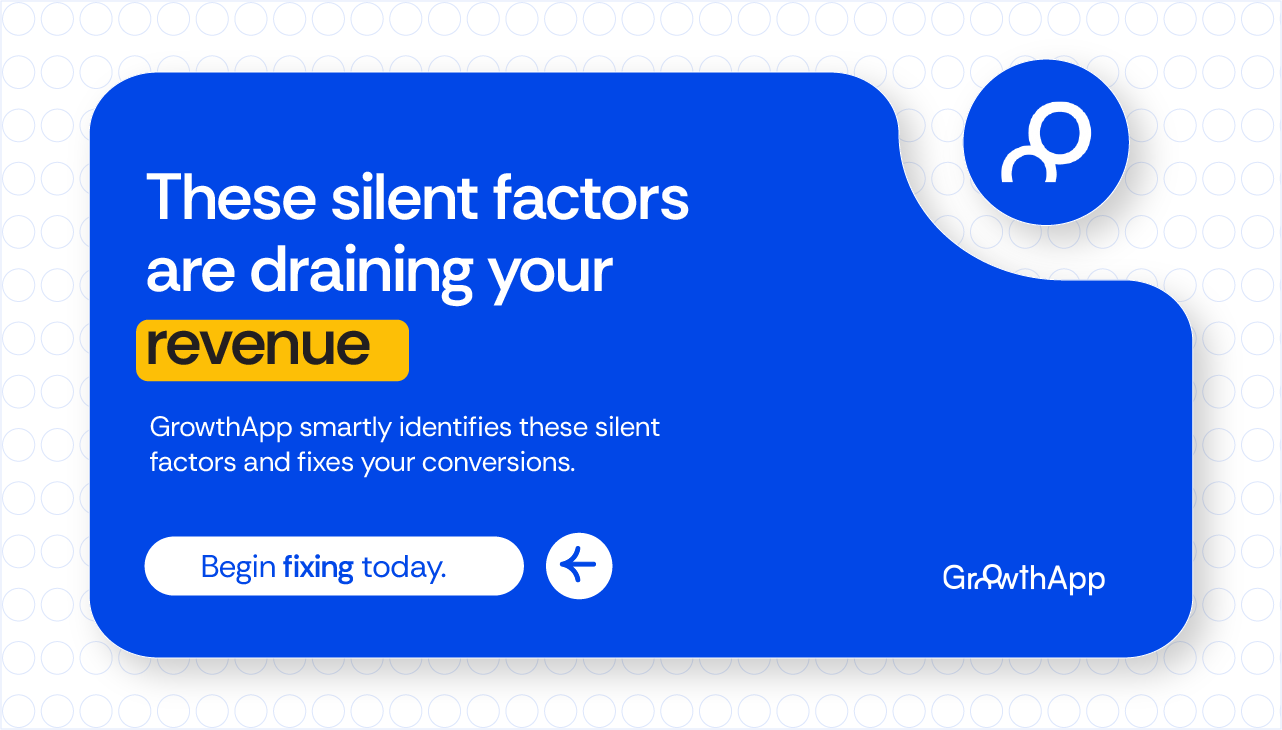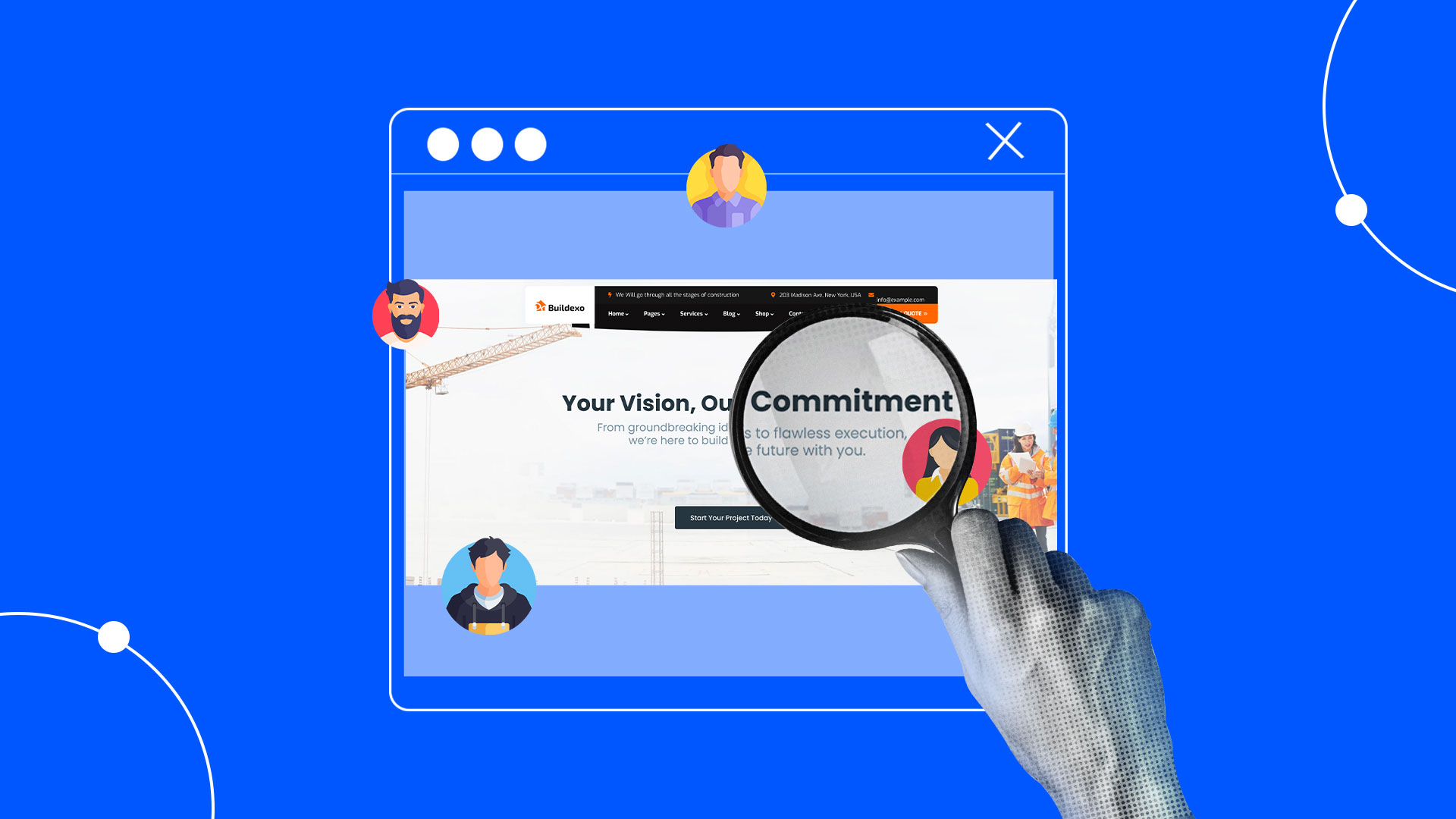Is your business suffering from Near-Success Syndrome? Or perhaps we should call it Near-Conversion Syndrome, the moment where you’re always just inches away from turning curious visitors into action-taking customers, only for them to slip away at the last second. That’s very relatable. Across industries, websites are grappling with this silent crisis. With the average e-commerce conversion rate at 3.65% and even lower for other industries, there is a desperate quest for answers.
We understand the frustration of near misses. And we’re here to change that narrative. In this guide, we’ll help you uncover the hidden red flags that might be silently alarming your traffic, making them perceive your website as “untrusted” and causing them to flee. These 5 overlooked red flags could be silently killing your conversions, and it’s time to tackle them head-on.
1. Overcomplicated or cluttered forms
Forms are meant to be simple gateways that help users complete essential actions, whether it’s signing up for a newsletter, making a purchase, or requesting more information. But when those forms are confusing, cluttered, or overly complicated, they become obstacles and the very fuel that ignites the spark of frustration from your now frustrated and infuriated leads. The result? – Hard bounce!
Many businesses make the mistake of cramming too many fields (most of which are always unnecessary for the required end point of your sales funnel) into their forms or failing to optimize them for user-friendliness. You’ve probably seen it before. A form that asks for your home address, birth date, company title, favorite flavor of ice cream, and the genotype of your pet gold fish… just to download a free eBook!!!. Common!
Do you see where this is going?
It’s time-consuming and somewhat provocative and frustrating. Time is of the essence to every individual who lands on your page with the hopes of getting a problem solved or a service offered. Here’s the catch, you didn’t lose them due to lack or inability to offer what brought them in the first place, but your process is anything but seamless and easy to navigate.
According to HubSpot, reducing the number of form fields from 11 to 4 can increase conversions by as much as 120%. Astronomical numbers just for easing the work of visitors. This can’t be over emphasized. Nobody likes to be ladened with too much work.
Another reason forms fail? Poor mobile optimization. With 58% of web traffic coming from mobile devices (Statista-2024), forms that don’t adapt to smaller screens create frustration, leading to high abandonment rates.
What to fix:
- Keep It short and relevant: Ask for only the most essential information. Each field should have a clear purpose.
- Use smart autofill features: Help users complete forms faster by enabling autofill functionality for common fields like name, email, and address.
- Simplify the design: A clean, minimalist form layout reduces cognitive load and makes it easier for users to focus on the task at hand. Avoid excessive text, unnecessary drop-down menus, or irrelevant options.
- Mobile optimization is a must: Ensure your form works seamlessly on mobile devices, with large, tappable buttons and minimal scrolling.
2. Ignoring best SEO practices
If your website isn’t optimized for search engines, it’s practically invisible. And here’s the frustrating part: many businesses fall into the trap of celebrating a “live” or “launched” website, mistaking it for digital success.
The kicker is: Why should a gem of great value like your brand be hidden underneath layers of move-making competitors when you can equally compete on the surface and shine the brightest? SEO (Search Engine Optimization) plays a crucial role in helping your site rank higher on search engines, bringing in organic traffic that can convert into paying customers.
Many businesses overlook SEO because it seems overly technical, or they focus on outdated tactics like keyword stuffing and ignore modern strategies. Google’s algorithms prioritize factors like user experience, mobile-friendliness, high-quality content, and fast loading speeds. Ignoring these can significantly lower your rankings.
What to fix:
Implementing the right SEO practices can drive better visibility and conversions. Start with the basics:
- Keyword research: Understand what your audience is searching for and target relevant keywords.
- Optimize your meta-tags: Write compelling meta titles and descriptions that entice clicks.
- Improve site speed: Compress images, leverage browser caching, and minimize code bloat.
- Mobile optimization: Ensure your website is mobile-friendly to accommodate the growing number of mobile users.
- High-quality content: Focus on creating valuable, engaging, and relevant content that answers your audience’s questions.
Websites that appear on the first page of Google capture 92% of all search traffic, according to a study by Chitika Insights. Ignoring SEO means you could be missing out on massive potential traffic. In a digital world where visibility is everything, neglecting SEO is like setting up a shop in the middle of nowhere and wondering why no one visits.
When forms are user-friendly, they create a frictionless path toward conversion. Whether someone is subscribing to your content, signing up for a trial, or checking out after adding items to their cart, the form is often the last step in their journey, and it’s crucial that nothing gets in their way.
3. Failing to use analytics to track performance
You can’t improve what you don’t measure. Ignoring website analytics is like flying blind- you won’t know where you’re going, what’s working, or where you’re falling short. Without data-driven insights, you could be missing out on key opportunities to optimize user experience, boost engagement, and, most importantly, increase conversions.
Many businesses either overlook the power of analytics tools or get overwhelmed by the metrics available. Others may feel that tracking is unnecessary after launching their website. Unfortunately, this “set it and forget it” mentality leads to stagnation.
What to fix:
- Leverage free tools like Google analytics and Google search console to monitor essential metrics such as bounce rate, session duration, traffic sources, and conversion rates. This way, you’ll spot patterns, identify areas that need improvement, and fine-tune your strategy to maximize results.
4. You’re springing unexpected fees at checkout and scaring buyers away
If you walked into a store and filled your cart with goods, then proceeded to the counter for payment and checkout. Only to be stunned by an outrageous increase in payment price for unforeseen costs you never planned for. What would your reaction be?
There are a few points to note here:
- You could have been working with a strict budget
- It’s a store, therefore, each item has price tags that directly influence your choices and the scale of your expenditure.
The scenario is definitely not looking good and it will take a miracle for such an individual to return after such an encounter. That’s exactly what it feels like when you spring up unexpected fees at checkout.
Shoppers want predictability when it comes to pricing. When they encounter surprise shipping charges, unexpected taxes, or other hidden fees at the last moment, it disrupts their sense of control and leaves a negative impression. According to a study by Baymard Institute, 48% of users abandon their carts due to unexpected costs, a clear sign that unclear pricing is hurting your conversions.
What to fix:
Build transparency into your pricing structure.
- Be upfront with shipping fees: Display estimated shipping costs early, ideally on product pages or during the initial cart review.
- Offer free shipping thresholds: Incentivize purchases with offers like “Free shipping on orders over $50.”
- Use a tax estimator: Clearly calculate taxes based on the customer’s location to avoid any surprises.
- Implement a checkout progress bar: A multi-step progress bar helps reassure users they won’t encounter surprise charges on the next screen.
5. You’re following industry giants blindly, not crafting your own strategy
Emulating the strategies of billion-dollar brands can seem like safe play, but it’s not always the golden ticket you expect. What works for industry giants with limitless marketing budgets and brand recognition might backfire for smaller businesses that thrive on authenticity, personal connections, and niche value.
Big-name brands often dominate with aggressive campaigns, sweeping visuals, and celebrity endorsements that resonate due to their already-established authority. Smaller businesses, however, tend to succeed by carving out a unique brand voice and offering a more tailored customer experience. Blindly mirroring the tactics of the Amazons and Nikes of the world can dilute your brand identity and leave your audience confused.
What to fix:
Forge your own path by focusing on:
- Audience-centric strategies: Dive into your customer data and segment your audience. What are their pain points? What type of messaging appeals to them? Growie helps you segment your audience and develop winning strategies for conversion.
- Value-based branding: Highlight your unique selling points (USPs), whether it’s sustainability, personalized service, or exclusive products.
- Experimentation: Growie’s experimentation feature allows you to test your strategies on a smaller scale and monitor results using analytics. By so doing, you adjust campaigns based on real-time performance rather than assumptions.
- content that connects: Create relatable, behind-the-scenes content that reinforces your authenticity.
The fix you didn’t know you needed
If you’ve been stuck in a cycle of near-misses, watching potential customers slip through your fingers, you’re not alone. The truth is, the silent killers of conversions aren’t always obvious. From frustrating forms to unexpected fees and neglected analytics, every overlooked detail plays a role in driving visitors away.
But the good news is fixing these issues isn’t rocket science. It’s about being intentional with your user experience, optimizing what already works, and making every interaction feel seamless.
And if you’re ready to take the guesswork out of improving conversions, Growie is your edge. With smart segmentation and real-time analytics, you can pinpoint where drop-offs happen, fine-tune your strategy, and turn hesitant visitors into loyal customers. Because success isn’t just about driving traffic. It’s about keeping it.




